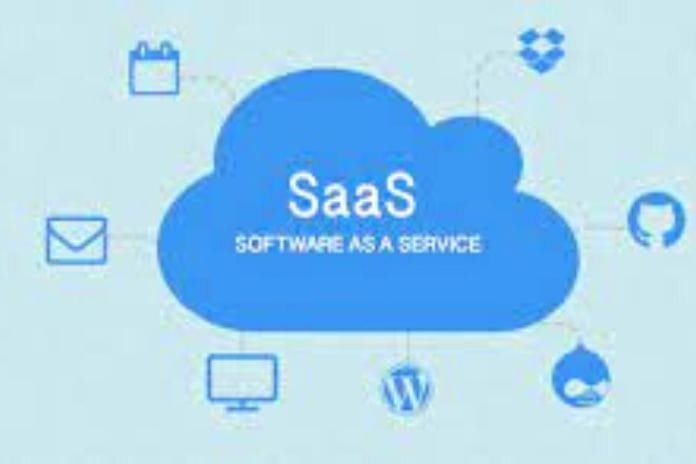SaaS Cloud: All The Secrets Of Software As A Service

Virtually unknown until about ten years ago, SaaS (Software as a Service) has established itself in the world of information technology, mainly. It is a constantly growing distribution model, gradually supplanting the so-called on-premise distribution. But what exactly is it about? What advantages does it allow? And what are its key features?
Definition
What Is SaaS?
SaaS is a model of programming conveyance through a cloud foundation. Its principal advantage? Exploit Programming and applications without requiring establishments (on PCs or servers). Access to SaaS administrations can be obtained by entering an internet browser from any gadget.
For the best insight, you should have a decent web association. The SaaS model has displaced customary Programming: the supposed on-premise Programming introduced on organization servers. Then again, the term utilized for SaaS was on request, the specific inverse of on-premise.
How Does It Work?
The SaaS makes applications facilitated on far-off servers accessible to clients, exploiting distributed computing: the information is cultivated in server farms outside the organization that utilizes them. SaaS and distributed computing are not interchangeable: the cloud is a more extensive idea than SaaS, which prevalently influences the IT framework of organizations.
Now let’s see how “software as a service” actually works :
- the user chooses the most suitable subscription offered by a software publisher;
- does not perform any installation on your computer or its servers;
- connects to the SaaS application via a web browser;
- get automatic and completely free updates.
You can use an API if you use multiple SaaS software and want to connect them. The Acronym of Application Programming Interface designates a set of procedures to connect various apps. For example, connecting your payroll software with your accounting software may be convenient to avoid re-entering the same data twice. Thus, the chances of errors, duplications, or omissions are reduced.
The SaaS Business Model?
The business model differs significantly from the on-premise model, where you buy a license. In SaaS, instead, you subscribe to a subscription :
- monthly or yearly,
- per user or user group,
- with or without commitment.
The subscription price includes the following:
- the use of online Software,
- hosting on publisher’s servers SaaS,
- automatic updates,
- customer service (optional).
The benefits Of SaaS
For Cost Reduction
A monthly subscription for a SaaS service is generally less expensive than an on-premise solution, especially considering the lack of maintenance costs. Plus, upgrades happen automatically. Again, at no extra cost. It is, therefore, a cheaper and more accessible formula for many companies.
For Software Accessible Anywhere And At Any Time
Accessing the Software from anywhere is extremely useful, whether in the office, on a train, or at home. With a simple Internet connection, you can carry out innovative work from the comfort of your home.
To Grow At The Right Pace
As the company grows, needs evolve accordingly (features, storage spaces, business needs, etc.). The flexibility of the SaaS subscription ensures optimal scalability. You can adjust the number of users according to your needs, choose only the packages with the features you need, and switch from an unlimited monthly subscription to a cheaper annual subscription… There’s a formula for every need!
To Always Remain Operational
An unexpected event in the company? No problem – all data is safe in the cloud. To ensure business continuity, you can switch computers and start right where you left off!
SaaS, PaaS, IaaS: How Are Cloud Computing Services Different?
Do you manage IT services locally or prefer to host them on remote servers in the cloud? The main difference between IaaS (Infrastructure as a Service), PaaS (Platform as a Service), and SaaS (Software as a Service) lies in the number of services hosted on-premises or in the cloud. This diagram helps to understand the differences between the various models:
IaaS, Infrastructure As A Service
IaaS is viewed as the primary level of the cloud. It is a far-off framework where CIOs introduce their working framework and applications without stressing over the equipment. They lease as much space (computer chip and slam) as the need might arise and stay answerable for running the Product. Microsoft Sky blue and Amazon EC2 offer this assistance.
PaaS, Platform As A Service
This model is a cross between IaaS and SaaS. In this case, the company:
- benefits from a platform distributed as a service,
- has an environment in which he can add his applications and Software,
- rent the operating system, server, and Software.
Well-known PaaS service providers include Windows Azure and IBM Bluemix.
The Future Belongs To SaaS
There is no preventing rapid development from getting Programming as a Help, and it’s an imperative job in computerized change. Saas is only the panacea for some business ills. However, its advantages are impressive, particularly concerning efficiency. What are you hanging tight for to change over completely to the SaaS demonstration if you haven’t? Your seriousness can profit from it!


